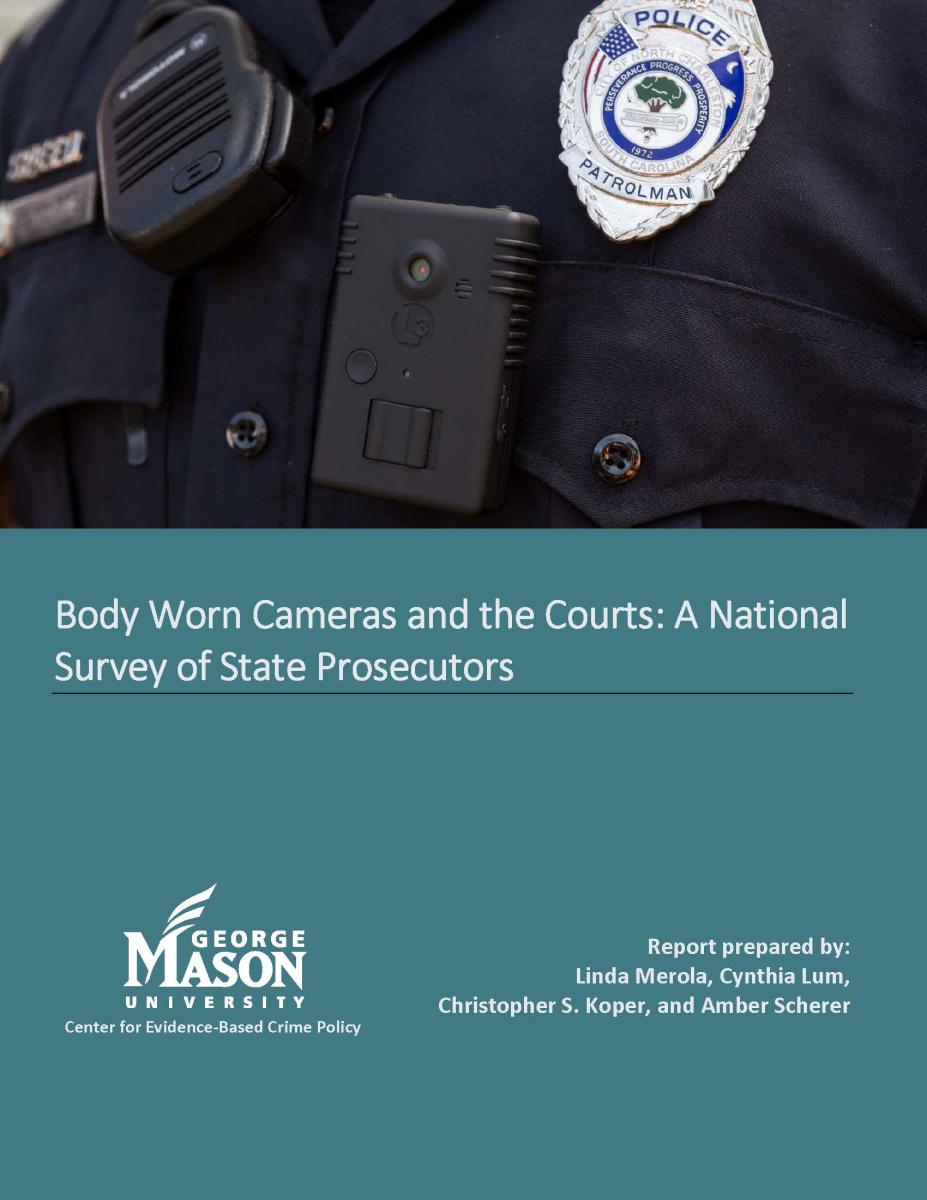Body-Worn Cameras and the Courts: A National Survey of State Prosecutors
George Mason University's Center for Evidence-Based Crime Policy

At the same time, this rapid adoption of BWCs is occurring within a low information environment; researchers are only beginning to develop knowledge about the effects, both intentional and unintentional, of this technology. A recent review of the literature on the topic of BWCs conducted by White (2014) found only a handful of empirical studies of the technology completed by September 2013. These studies have focused on a narrow set of research questions about the impact of the cameras on police behavior. Further, only a small subset of these studies rigorously examined BWCs using valid scientific methods. As Lum (2015) has emphasized, rapid adoption of technologies in the absence of high-quality information about the impact of those technologies can lead to unanticipated and unintended consequences that may work against both police and citizen interests. The need for more research in this area is paramount, as the adoption of BWCs will likely have important implications for police-citizen interactions, police management and budgets, safety and security, citizen privacy, citizen reporting and cooperation with police, and practices in the courts. But what research questions and types of research should be pursued and why? How can we build a translatable knowledge base that is responsive and rigorous? In our first report to the Laura and John Arnold Foundation (see Lum, Koper, Merola, Scherer & Reioux, 2015), we reviewed the existing and ongoing body worn camera research to identify what was known about BWCs and what questions needed further research. In this report, we build on the knowledge about body worn cameras by carrying out a national survey of state prosecutors’ offices to begin to understand the impacts of BWCs on the courts.
A random sample of 1,005 prosecutors’ offices was drawn from the National Census of State Prosecutors produced by the Bureau of Justice Statistics (BJS, 2007). Mail-based surveys with an electronic option across multiple waves of data collection yielded 321 returned surveys. Lead prosecutors were asked about their use of body worn camera footage so far, as well as their opinions about key issues related to the technology and any concerns they have about the adoption of cameras by law enforcement in their jurisdictions.
To read the full report, click here.
